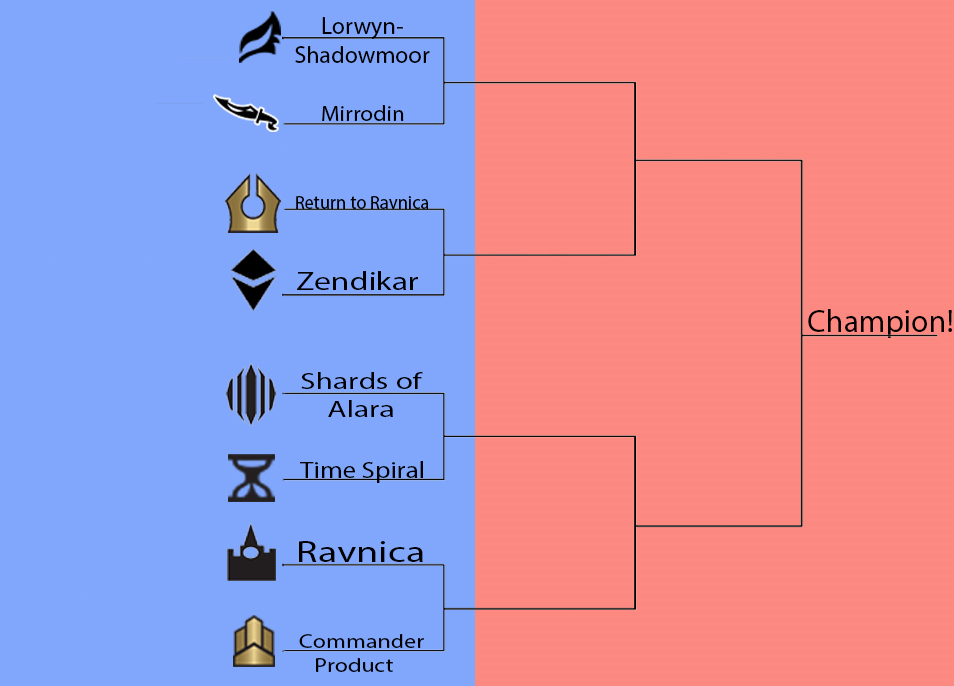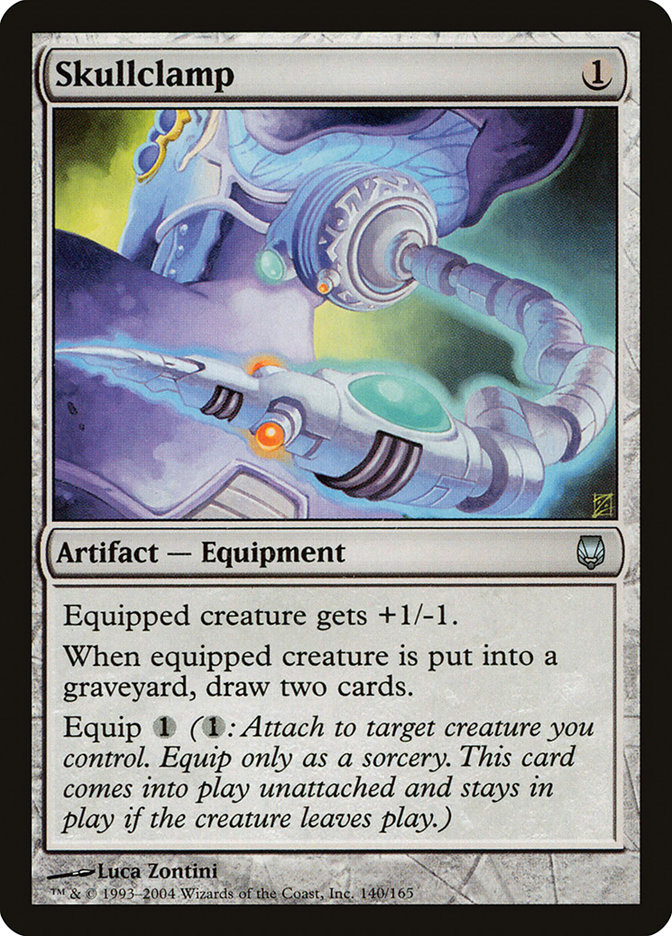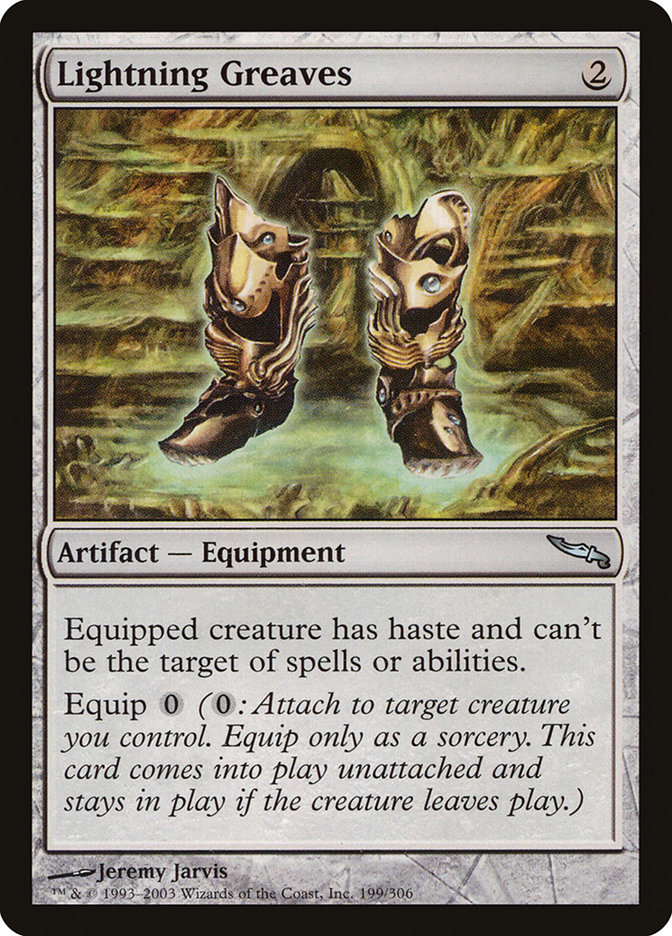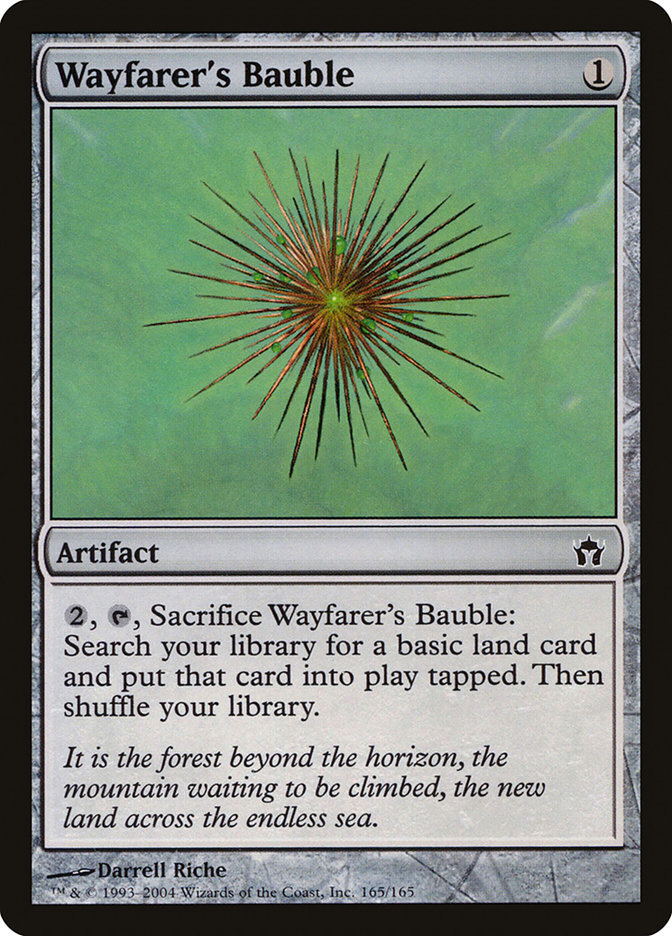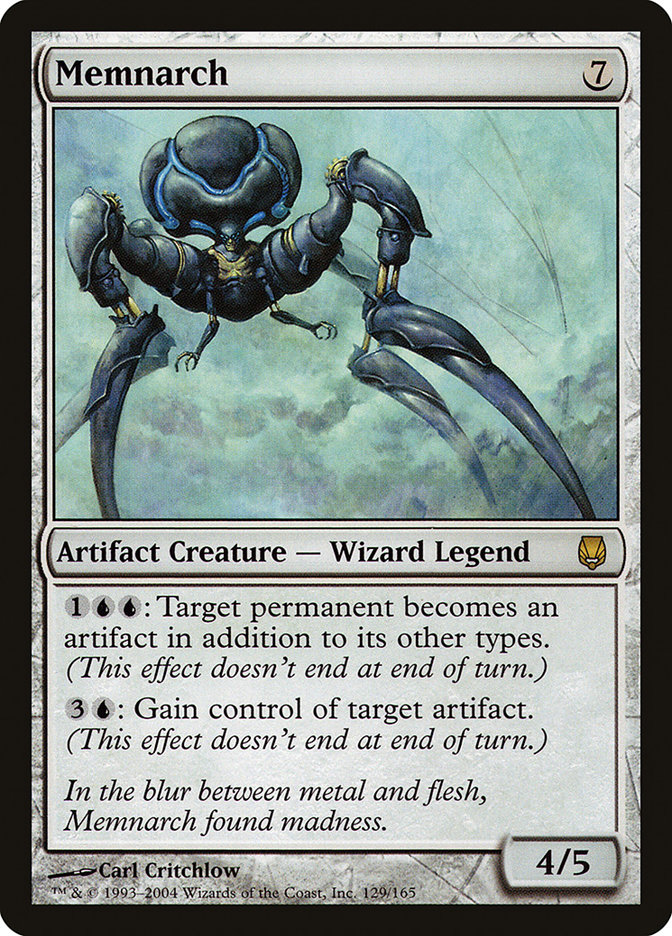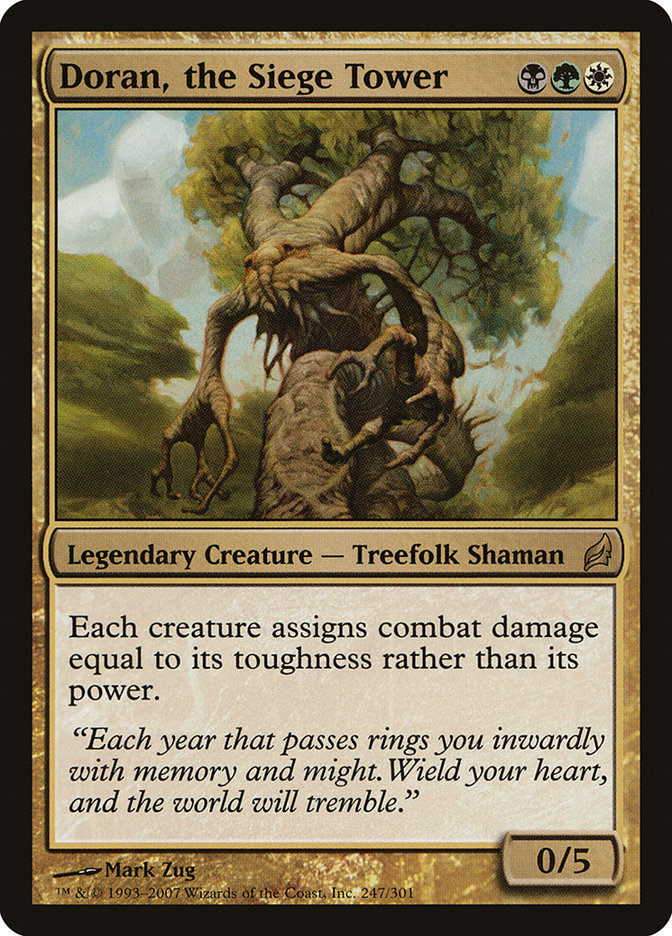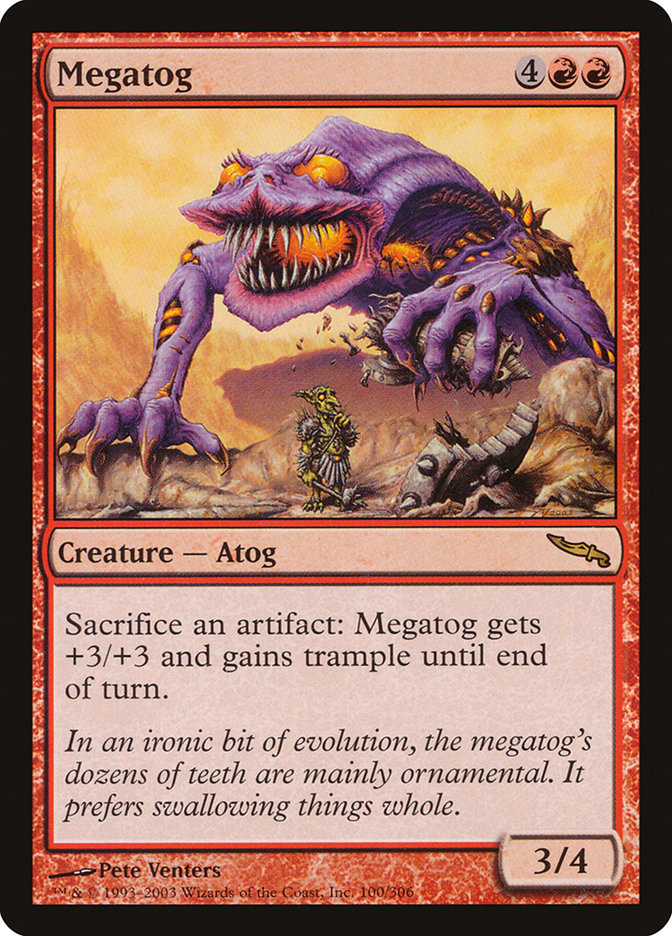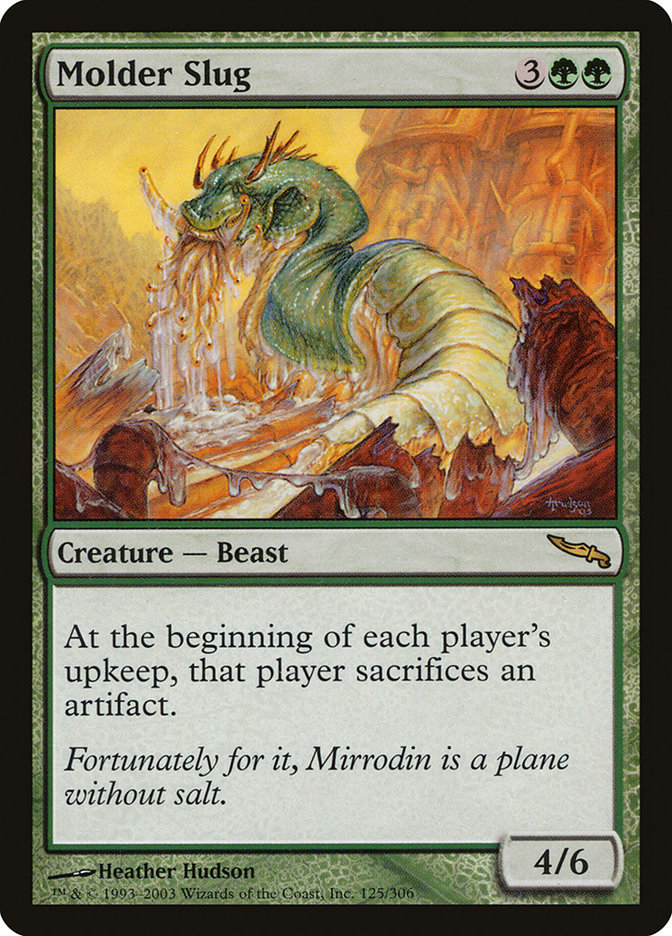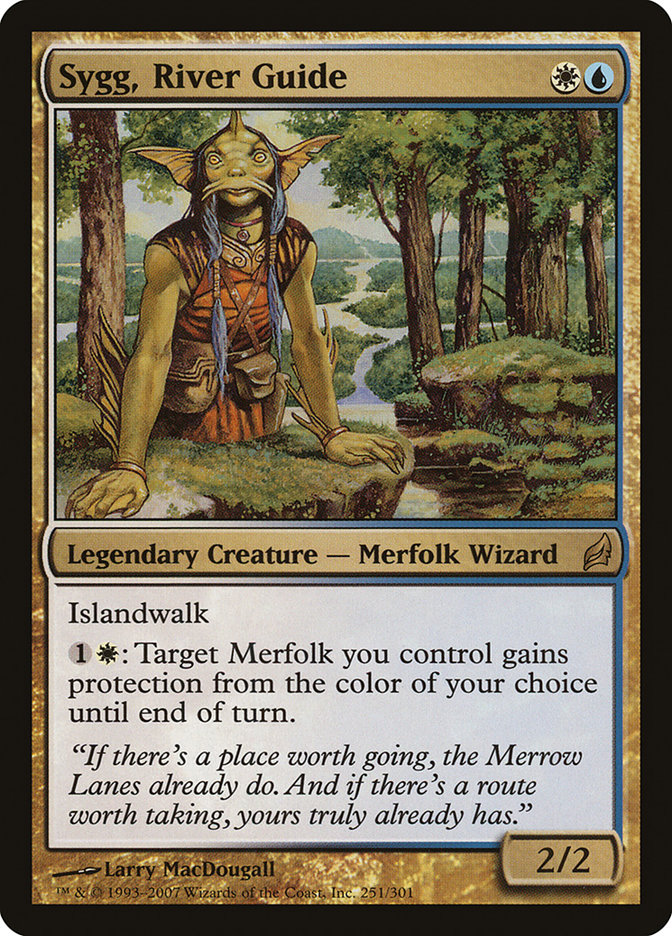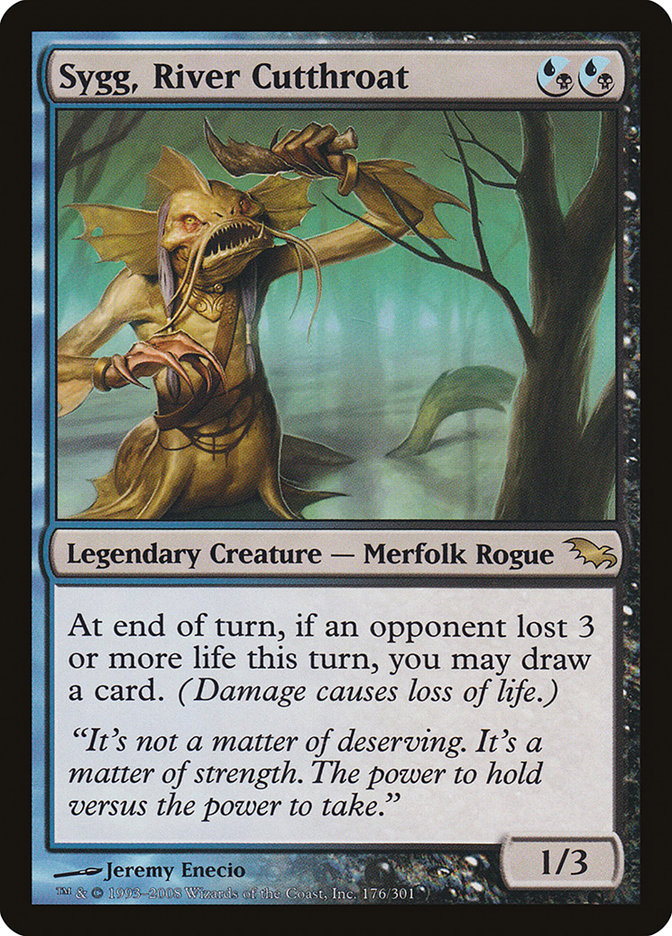The Top 8 of the Battle Of The Blocks has arrived, and we start the first match with the number one contender, Lorwyn-Shadowmoor block, going toe to toe with artifact heavyweight Mirrodin! When we first dove into Mirrodin block, it was challenging the enchantment-heavy Urza’s block in the Sweet Sixteen and dominated the matchup with impressive artifacts that helped each color extend out of its color pie to do something uncharacteristic. The artifacts of Mirrodin block allow monocolored decks to perform actions that the color is usually unable to capitalize on, like ramping with Gilded Lotus or drawing a fist full of cards in colors like green or white with Mind’s Eye.
These color-stretching artifacts aren’t Mirrodin’s only gift to the format. The first printing of Equipment is in these sets, and WotC started out with some of the strongest in the game. Notables like Sword of Fire and Ice, Loxodon Warhammer, and Skullclamp are in Mirrodin block, and each one is heavily played in the Commander.
Lorwyn-Shadowmoor also brought some new ideas, with the first printings of planeswalkers and the tribal card type. Lorwyn block focused on a sunny storybook style of flavor, even trading the common white-based Human creature type for the fanciful Kithkin creature type to further separate the player from the plane. Going set by set, Lorwyn established the all-encompassing tribal theme with a set of five creature type lords and Harbingers to set the tone for the rest of the block. Morningtide compounded on this tribal theme by extending it to the classes of each tribe, creating cross-creature type synergies by focusing on the Soldiers, Warriors, Wizards, Rogues and Shamans of the sets.
When the sunny plane of Lorwyn was plunged into eternal night in Shadowmoor, the allied hybrid color theme came out to play with the printings of filter lands, lords, and humongous allied-colored Demigods. Eventide brought one of the strongest pieces of the Lorwyn-Shadowmoor arsenal with the printing of a myriad of important enemy-colored spells and lands to help these color pairings survive in the Commander format.
We are officially in the Top 8, where every single block has already battled it out in a previous article. Let’s see who the victors are and what the path ahead holds for them in the bracket.
What a Top 8 we have! Remember, these battles are to decide which block contributed the most to Commander, not the best block in all of Magic. They will be compared in the usual five categories: Staples, Commanders, Strategies, Flavor, and The Bad.
Staples
Five Notable Staples From Mirrodin Block
1) Solemn Simulacrum
2) Skullclamp
3) Eternal Witness
4) Gilded Lotus
5) Lightning Greaves
It isn’t a real surprise that four out of the five best cards from Mirrodin block are artifacts. The benefit of being colorless means these spells can be spread across all the colors of the format and slot in to help any deck or strategy that can utilize them. Skullclamp brings an amazing amount of card advantage to a format where getting extra value out of spells is of paramount importance. By turning creatures into more and more cards, burying opponents underneath an avalanche of cardboard has never felt so easy.
The only other Equipment to make the list, Lightning Greaves, earns its way into decks by increasing the speed of a build by giving a single creature haste each turn, increasing the clock and protecting important creatures by giving them shroud for free! Solemn Simulacrum and Gilded Lotus are beautiful in their efficiency, helping players fix their mana in any color and in the case of Solemn Simulacrum even drawing its controller cards when it dies.
Five Notable Staples From Lorwyn-Shadowmoor Block
1) Reveillark
2) Mulldrifter
3) Oblivion Ring
4) Vivid Lands
5) Filter Lands
An easy way to tell if a card will be successful in Commander is if it has an impactful enters-the-battlefield or leaves-the-battlefield ability, and both Reveillark and Mulldrifter fit this simple rule. Karmic Guide’s popularity as the reanimation creature of choice and Commander players’ love of creatures with good ETB abilities with low mana costs is what places Reveillark at the top of this list.
Cards like Eternal Witness, Solemn Simulacrum, Mulldrifter, Bane of Progress, and Farhaven Elf can all be brought back with the Lark and in the correct deck can be accompanied by cards like Birthing Pod, Grave Pact, or Saffi Eriksdotter to really squeeze all of the spice out of this amazing Magic card. Mulldrifter isn’t as powerful as its five-drop cousin Reveillark, but it sees just as much play due to its cheaper evoke cost and how easy it is to copy or reanimate.
Cards To Consider
With the printing of Bane of Progress and the steady increase in artifact and enchantment destruction, commonly played artifact acceleration like Signets and Manalith are no longer safe. As a result, artifacts like Wayfarer’s Bauble have begun seeing more play. Wayfarer’s Bauble costs the same amount as a Farhaven Elf but provides a way for nongreen decks to increase their mana and keep abreast of decks looking to win by casting larger spells quicker.
With the introduction of Oloro, Ageless Ascetic and the prevalence of Trostani, Selesnya’s Voice as the G/W Token deck of choice, its finally time to load up on Stigma Lasher to prevent these decks from winning the game by taking advantage of the high starting life total and gaining astronomical amounts of life. A quick trick with Stigma Lasher that many have overlooked is that it doesn’t need to deal combat damage for its game-altering effect to take place. Cards like Warstorm Surge and Soul’s Fire are unique ways to have Stigma Lasher connect and also happen to be on color.
Verdict: This is a section that celebrates the cards that help the format perform at a high capacity because they help decks get over small hurdles like mana fixing or card draw and play those splashy spells Commander is famous for. These blocks are dead even with the five cards pulled for these lists, but when we extend out from these first five the artifacts of Mirrodin, cards like Duplicant and Darksteel Ingot barely steal this section away from Lorwyn-Shadowmoor and grab the win.
Commanders
Mirrodin brings five legends to the Commander format, each one interacting with the main theme of this block: artifacts. Memnarch is one of the stronger mono-blue commanders and is commonly built as a tribal Wizards deck that capitalizes on the general’s ability to permanently steal opponents’ permanents. Illusionist’s Bracers and Heartstone are two artifacts that make Memnarch extremely powerful, meaning the best way to manage this spider-shaped Wizard is to exile those spells and force this legend to play fair. Bosh, Iron Golem is another general that loves a pair of Illusionist’s Bracers, but just like Memnarch and the other generals from Mirrodin block, he sees a very small amount of play and is considered unpopular even though his ability is extremely powerful.
Unlike Mirrodin, Lorwyn-Shadowmoor is filled with popular generals for the Commander format. Rhys the Redeemed was the unequivocally best G/W token-making general until Trostani, Selesnya’s Voice catapulted on to the scene in Return to Ravnica to challenge his throne. Rhys the Redeemed’s popularity has dwindled, but his position in the format is as strong as ever due to his two impactful abilities that mirror cards like Parallel Evolution and Imperious Perfect.
Doran, the Siege Tower is a steady constant in the Commander format because of his ability to lead many different decks into battle. Doran’s toughness-altering static ability creates some fun general damage-focused Voltron builds with cards like Slagwurm Armor, and the Treefolk tribe love this multicolored legend and are commonly seen crashing into opponent’s faces alongside their three-mana general.
Verdict: The generals from Mirrodin can be powerful in well-built decks, but the legendary creatures from Lorwyn-Shadowmoor outshine these artifact-loving legends as some of the most popular choices in the Commander format, easily taking this section.
Strategies
The reason Lorwyn-Shadowmoor is a heavy favorite in this competition is because it focused on the two things Commander players love most: multicolored cards and tribal strategies. These sets cemented the Treefolk and Elemental tribes as playable decks with legendary creatures and lords to match and even produced filler for any other tribal deck inventive players want to build with the creation of Changelings and support cards like Door of Destinies.
Decks that focus on a singular class, like Wizards or Soldiers, gained some great cards from Morningtide, like the Bannerets and cycle of Equipment that were tailored for these specific builds. When we step away from tribal, Lorwyn still provides some great cards, such as Marsh Flitter, Cloudgoat Ranger, Bitterblossom, and Ajani Goldmane for token decks; Stonehewer Giant for decks that love Equipment; and Reveillark, Puppeteer Clique, and Cauldron of Souls for decks that like to sacrifice their own creatures for value.
Mirrodin block is the first place deckbuilders turn to when building any artifact or Equipment-based strategy because of all the cards that facilitate those builds are in these sets. Artifact-based decks rely on cards like Sculpting Steel, Myr Retriever, and Vedalken Archmage to get more mileage out of each artifact they cast, while cards like Darksteel Forge and March of the Machines commonly close out games for these strategies.
Mirrodin block brings both strong Equipment and Equipment enablers with artifacts like Sword of Fire and Ice, Sword of Light and Shadow, and Loxodon Warhammer attached to enablers like Auriok Steelshaper and Leonin Shikari. The sunburst mechanic in Fifth Dawn transformed the artifact-centric Mirrodin block toward a five-colored spectrum, printing Door to Nothingness, All Suns’ Dawn, and the cycle of Bringers that are commonly seen in five-colored Commander decks.
Verdict: Lorwyn-Shadowmoor wins this section with its superior tribal themes that are prevalent in the Commander format. The artifact and Equipment themes from Mirrodin are also very important for Commander and are rather popular, but they can’t compete with the offerings Lorwyn-Shadowmoor bring to the entire Commander format.
Flavor
A world made of metal versus one that springs from an enchanting tale of English folklore—these two planes couldn’t be any more different from one another. The execution of the flavor is what will win this section, and Mirrodin does a great job showcasing its setting of a world encased in metal.
Cards like Leonin Bladetrap and the artifact lands really sell players on a world enveloped in a metallic coat because the land itself is made of metal. In a plane dominated by the inorganic, the creatures of the color pie also sell the artifact motif by either interacting with artifacts or wearing some type of armor they’ve scraped from the world around them. Looking at cards like the furnace-chested Megatog or the artifact-eating Molder Slug, the creatures that inhabit this world are completely adapted to it and bring these qualities with them into Commander.
The fairytale style of Lorwyn and Morningtide is a perfect contrast with the gloomy Shadowmoor and Eventide, creating an interesting dichotomy between the two halves of this block. This light atmosphere is shown in cards like Woodland Changeling and Guile where even the bigger creatures of this block are still owl-headed loons.
After Morningtide, the Great Aurora set off a monumental change in the plane of Lorwyn, transforming the light atmosphere filled with Boggart Shenanigans and goat-riding Kithkin like Springjack Knight into a world dominated by ghoulish Elementals and vicious monsters. The easiest way to see this change in demeanor is with the legendary creatures, like the amiable Sygg, River Guide morphing into the ruthless Sygg, River Cutthroat and Fallowsage becoming Hollowsage.
The one fault in this block flavor-wise is the art direction on the Elementals and Changelings. Even if the Changelings are supposed to not have a definable race or class because they are all of them at once, what in the world is going on in some of this art like Chameleon Colossus or Woodland Changeling? The Elementals are also a mess of animals slammed on top of each other, such as the confounding art for Shriekmaw or the flying four-winged nest that is Reveillark.
Verdict: Mirrodin wins this section by sticking to its theme and extending it past the artifact spells to the other creatures in the block to fully sell players on its unique plane.
The Bad
Mirrodin committed two very large crimes in the eyes of Commander players. The first was the Time Stretch carrying Panoptic Mirror. The second was the incredibly frustrating-to-handle Sundering Titan.
Panoptic Mirror was an innocuous card in its printed format because the best thing you could really do was put a Tooth and Nail on it and hope for the best. However, once Panoptic Mirror hit an Eternal format like Commander, the extra life cushion combined with access to cards like Time Stretch, Beacon of Tomorrows, and Capture of Jingzhou led to this five-mana artifact getting a very quick ban.
Sundering Titan, on the other hand, was good in multiple Constructed formats before it made its impact on Commander. Unsurprisingly, Commander players also did not enjoy having their mana bases nuked or how easily abusable the 7/10 Golem was, so away it went as well.
Lorwyn-Shadowmoor brought Painter’s Servant to the format, which was really banned due to its interaction with Grindstone more than anything else.
Verdict: Lorwyn-Shadowmoor hurt the format less with the combo piece Painter’s Servant than Mirrodin block did with the infuriating Panoptic Mirror and Sundering Titan.
Final Verdict
These two blocks are very close to each other in power level, with a huge amount of staples and strategies emanating from them. For a concise view of who won this Battle Of The Blocks, check out the report card below.
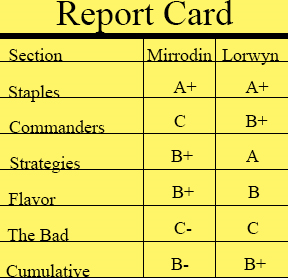
Once again the commanders were the determining factor for who won this battle between Mirrodin and Lorwyn-Shadowmoor. The five rarely played commanders from Mirrodin just couldn’t hold back the 21 popular legends from Lorwyn and Shadowmoor. Lorwyn-Shadowmoor move on to the Top 4 to fight against the winner of our next battle between Return to Ravnica and Zendikar!

